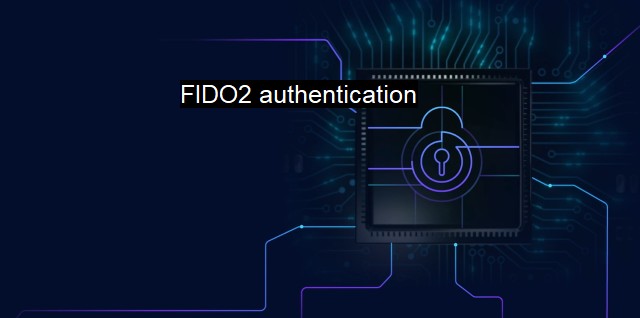What is FIDO2 authentication?
Explaining FIDO2 Authentication: A New Standard for High-Security Online Authentication
"FIDO2 authentication" , refers to a set of technology standards that advocate for passwordless authentication. Originating from the phrase Fast IDentity Online, FIDO2 is a joint venture between the FIDO Alliance and the World Wide Web consortium. The prime objective of this concept is to improve the overall security and practicality of online credential verification which cyclically accentuates cybersecurity.From a cybersecurity perspective, the case for FIDO2 is rendered greater due to its noteworthy role in reducing an individual's dependence on passwords for security and access. Conventionally, passwords have been the foremost measure to protect data in the realms of both the internet and antivirus software. Yet, as cybercriminal techniques become more sophisticated, password-based security often leaves much to be desired especially given how easily they can be stolen, guessed or lost. Thusly the advent of passwordless authentication looks to mitigate these inherent discrepancies through a more comprehensive approach to cybersecurity.
Authenticated sessions constructed via FIDO2 technology hinge upon the implementation of public key cryptography. Unlike traditional authentication where the user's password is verified against a stored copy in a server, FIDO2 introduces a much more rigorous commitment to safeguarding user security. The overall architecture involves the user proving their identity to the website or software they're interacting with, this site or software responds by generating a pair of matches "keys". One of these keys is deemed public and held by the website while the other one, known as the private key, is secured within the device. During future logins, the site presents a challenge encrypted with the public key which can only be decrypted by the user who possesses the corresponding private key. Therefore, without ever needing to send a password the integrity of the authentication process is not compromised offering a heightened degree of security compared to traditional approaches.
Given the rise of high-profile data breaches and the sizeable impact on both reputation and belonging, implementing ways that strengthen secure access to digital assets is the critical functionality of cybersecurity. This is where antivirus software partakes within the FIDO2 landscape. Antivirus and cyber-security suites often call for frequent login processes to authenticate users and make requisite adjustments to settings. Designing these processes around the contours of FIDO2 deserves a worthy evaluation. Not having to handle sensitive passwords, protects the user’s digital ecosystem while the antivirus program continues to secure the device against malware by-inspect, detect and removing the same.
It is crucial to acknowledge that implementing FIDO2 does not epitomize the eradication of all security vulnerabilities. Instead, it focuses on mitigating overarching challenges that surface with traditional password authentication. With that said, no layer of authentication, not even FIDO2, can supersede the role of antivirus software in the cybersecurity paradigm. These programs are tuned to screen devices for hitherto unknown threats, intrusions, and back-doors that attackers may unethically resort to. Thus, it is wise to not equate FIDO2 as a standalone pillar of cybersecurity, but consider deploying it as an integral, complementary ingredient of an exhaustive, broader-ranging cybersecurity framework.
The FIDO2 authentication standard represents a monumental leap towards passwordless ecosystems while empowering secure and enhanced user experiences. It offers a potent adversary to myriad challenges faced by the cybersecurity arena stemming from password mismanagement, breaches, and hacks. Concurrently, it advocates fortifying systems with uncompromised antivirus mechanisms that work hand in glove to ensure optimum cybersecurity. For cybersecurity to make unprecedented strides forward, a merger of revolutionary ideas akin to FIDO2 with the tried-and-tested philosophy of antivirus measures is indispensable.

FIDO2 authentication FAQs
What is FIDO2 authentication?
FIDO2 authentication is a modern form of online authentication that enables users to securely authenticate themselves to websites and applications using public key cryptography. It is designed to provide better security and prevent phishing and other forms of online fraud.How does FIDO2 authentication work?
FIDO2 authentication works by using a combination of a user's device (such as a smartphone or security key) and a unique cryptographic key pair to authenticate them to a website or application. This ensures that the user is who they say they are, without the need for usernames and passwords.What are the benefits of FIDO2 authentication?
FIDO2 authentication offers several benefits over traditional authentication methods such as passwords. It provides better security, as it uses a unique cryptographic key pair for each user, which is more difficult to hack or steal than a password. It also eliminates the need for users to remember multiple passwords, and can be used for a wide range of applications and services.How can FIDO2 authentication improve cybersecurity and antivirus protection?
FIDO2 authentication can improve cybersecurity and antivirus protection in several ways. It provides an additional layer of security that can help prevent phishing attacks and other forms of online fraud. It also reduces the risk of password-related security breaches, which are a common cause of data breaches and malware infections. Overall, FIDO2 authentication can help to enhance the security and reliability of your online accounts and protect your personal data from cyber threats.| | A | | | B | | | C | | | D | | | E | | | F | | | G | | | H | | | I | | | J | | | K | | | L | | | M | |
| | N | | | O | | | P | | | Q | | | R | | | S | | | T | | | U | | | V | | | W | | | X | | | Y | | | Z | |
| | 1 | | | 2 | | | 3 | | | 4 | | | 7 | | | 8 | | |||||||